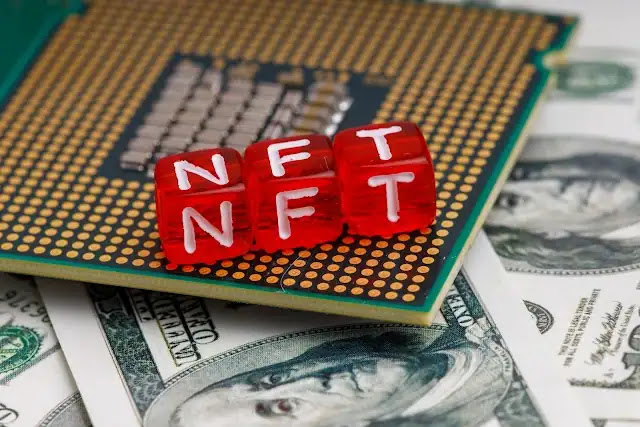What is an NFT and how does it work?
Non-fungible tokens (NFTs) have emerged as a new frontier for digital
ownership and monetization. These unique digital assets are verified on a
blockchain network and represent a specific piece of digital content, such as
artwork, music, or video. In this article, we will explore the key features and
potential of NFTs.
Before we find out ‘ how to mint NFTs ’, let’s learn the introductory description first. NFT is an acronym for the non-fungible commemorative,
and they're generally formed following
the ERC- 721 token standards on the Ethereum blockchain. They're blockchain-grounded digital means just like usual
cryptocurrencies; still, there's one
major difference between non-commutable commemoratives and general
cryptocurrencies. While one unit of a
particular crypto like Bitcoin can be traded for another with ease, the ‘non-fungibility’ of NFTs doesn’t allow them to be traded for another NFT, because
these means all retain unique traits. The term NFT thus easily expresses that an NFT can neither be replaced nor changed for
anything analogous due to having
exclusive parcels. In discrepancy,
edict currencies like the USD or cryptocurrencies like Bitcoin and
Ethereum are commutable, inferring that
units of them can be traded and reciprocated for one another.
Proof of Ownership and Authenticity
One of the most notable features of NFTs is their ability to provide proof of ownership and authenticity. Because each token is recorded on a blockchain network, buyers can be confident that they are purchasing the original, verified version of the digital asset. This has made NFTs particularly attractive to collectors, who can now own unique, verifiable pieces of art or music that were previously only available in the digital realm.
New Revenue Streams for Creators
NFTs have also created new revenue streams for creators. By selling their digital assets as NFTs, creators can earn money from the initial sale of the token, as well as any subsequent sales of the token on secondary markets. This has already led to some impressive sales figures, with some NFTs fetching millions of dollars at auction.
Controversy and Criticism
Despite their eventuality, the
rise of NFTs has not been without contestation. Critics have refocused that
the environmental impact of NFTs can be significant, as the energy needed
to power the blockchain networks that corroborate and record deals can be
substantial. also, some have argued that the hype around NFTs is driven more by enterprise and novelty than by any essential value in the digital means themselves.
The Future of NFTs
Despite these concerns, it seems clear that NFTs are here to stay, at least
in the short term. As creators continue to explore the potential of these unique
digital assets, we can expect to see more record-breaking sales and innovative
uses for NFTs in the years to come. Whether or not NFTs will become a permanent
fixture in the world of digital ownership and monetization remains to be seen,
but their impact on the art and music worlds is already being felt.
Pros of NFTs
- Proof of ownership and authenticity: One of the most
significant benefits of NFTs is that they provide proof of ownership and
authenticity. Each token is recorded on a blockchain network, which
verifies its originality and ensures that buyers are purchasing the
verified version of the digital asset.
- New revenue streams for creators: NFTs have created new
revenue streams for creators. By selling their digital assets as NFTs,
creators can earn money from the initial sale of the token, as well as any
subsequent sales of the token on secondary markets.
- A valuable tool for collectors: NFTs have become a
valuable tool for collectors, allowing them to own unique, verifiable
pieces of art or music that were previously only available in the digital
realm.
Cons of NFTs
- Environmental impact: NFTs have come under fire for
their environmental impact. The energy required to power the blockchain
networks that verify and record transactions can be substantial and has
led to concerns about the carbon footprint of NFTs.
- Hype-driven speculation: Some critics argue that the
hype around NFTs is driven more by speculation and novelty than by any
inherent value in the digital assets themselves. As a result, there is a
risk that NFTs may be overvalued or have a short-lived trend.
- Limited market accessibility: The market for NFTs is
still relatively small, and the cost of entry may be high for some
creators or collectors. Additionally, there may be issues with
accessibility for those who do not have access to cryptocurrency or the
technical expertise needed to navigate blockchain networks.
In conclusion, NFTs have both pros
and cons. On the one hand, they offer creators new ways to monetize digital
content, provide collectors with unique and verifiable pieces of digital art,
and offer proof of ownership and authenticity. However, they also have
potential environmental impacts, may be overhyped or speculative, and may have
limited accessibility. As NFTs continue to evolve, it will be interesting to
see how these issues are addressed and whether they will become a more
mainstream part of the digital content landscape.





%20(1).webp)

.webp)
0 Comments